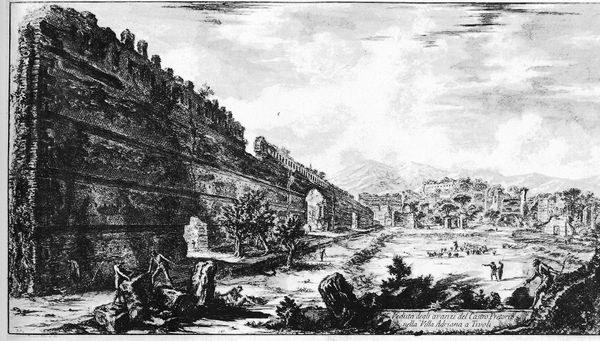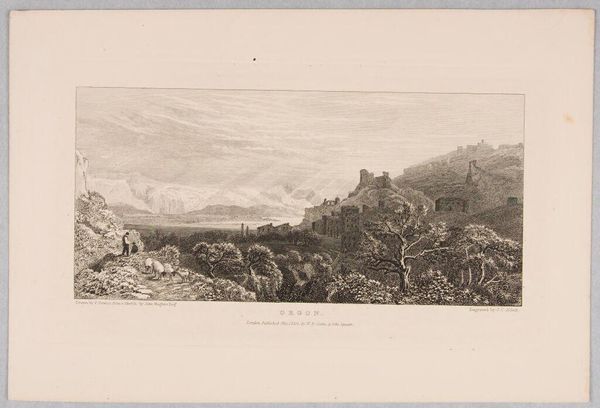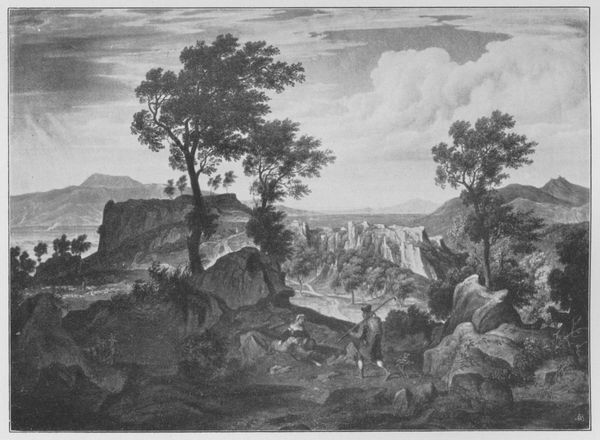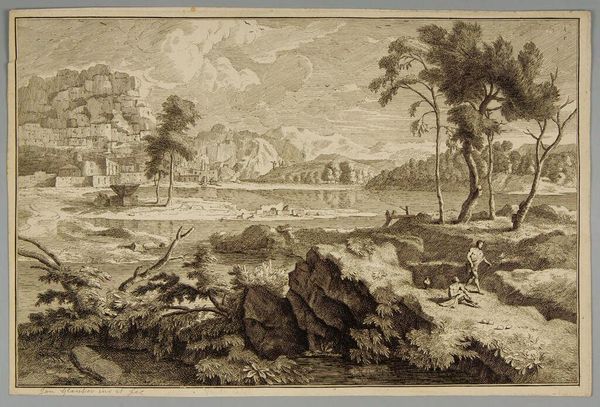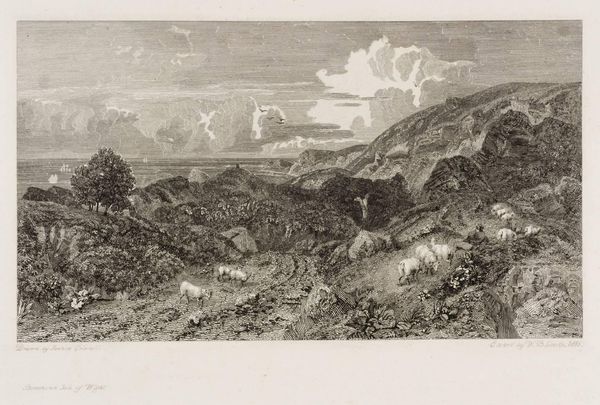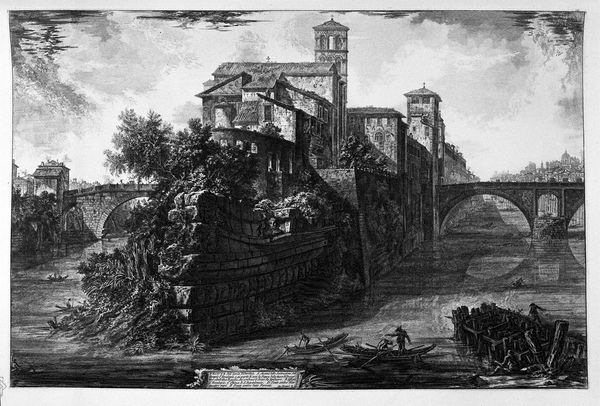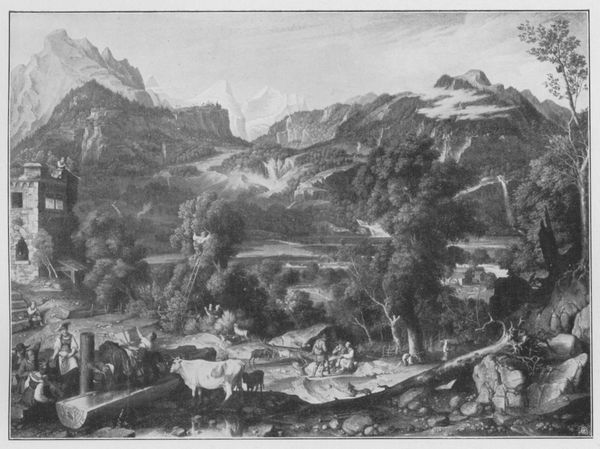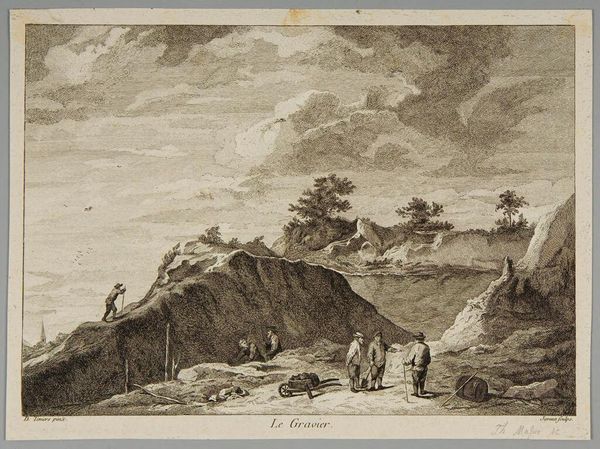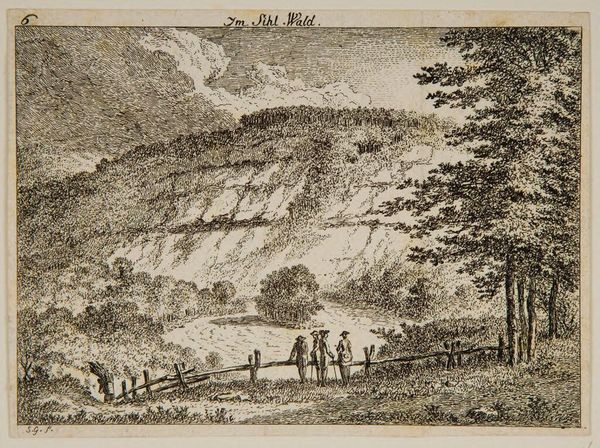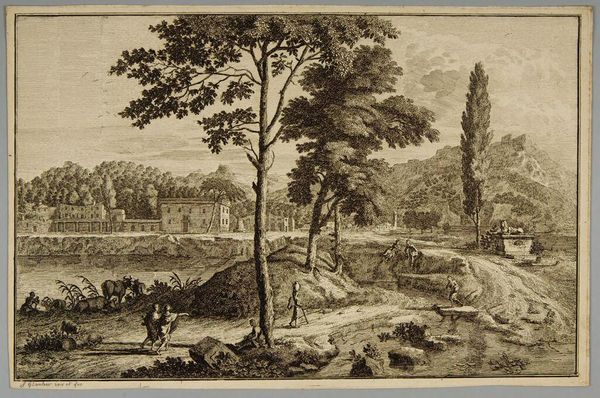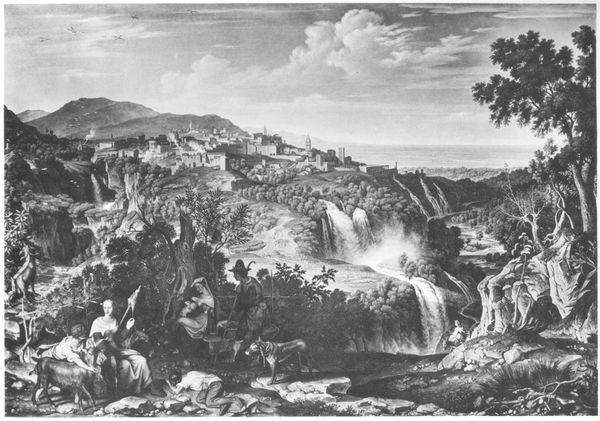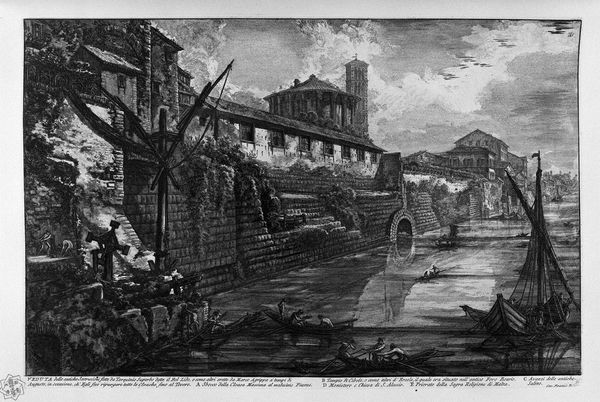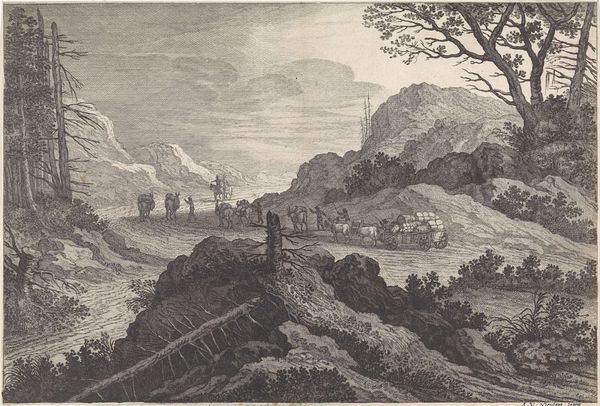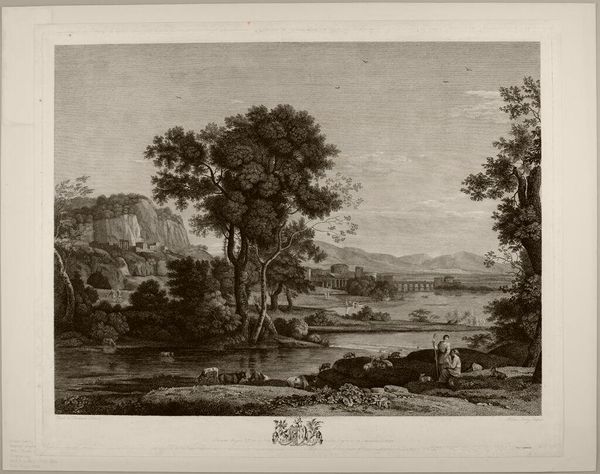
View the remains of the Praetorian Castro at Villa Adriana in Tivoli
0:00
0:00
carving, print, etching, engraving, architecture
#
carving
# print
#
etching
#
landscape
#
charcoal drawing
#
form
#
romanesque
#
ancient-mediterranean
#
column
#
mountain
#
line
#
cityscape
#
history-painting
#
engraving
#
architecture
Copyright: Public domain
Editor: This is Giovanni Battista Piranesi's etching, "View the remains of the Praetorian Castro at Villa Adriana in Tivoli." It depicts crumbling walls and distant mountains. It evokes such a strong feeling of the past, doesn’t it? What captures your attention most when you look at this print? Curator: Well, for me, it's the way Piranesi frames Roman antiquity for his 18th-century audience. Look at the scale; the ruins are monumental, yes, but then notice the tiny figures populating the scene. What effect do you think that contrast creates? Editor: It definitely makes the ruins feel even grander, more imposing! Almost as if nature is reclaiming what was once a bustling space, now relegated to something of sublime memory and reflection. Curator: Precisely. And that framing, that visual language, taps directly into the 18th-century fascination with the past. Remember, this was an era deeply engaged with ideas of empire, power, and the rise and fall of civilizations. Piranesi isn't just documenting ruins; he's participating in a cultural conversation about Rome’s legacy and perhaps the transience of power itself. Consider how the market for such prints influenced artistic choices… how might the popular perception of Roman grandeur affect Piranesi’s perspective, in your opinion? Editor: That's fascinating. I guess it shows how an artist can reflect, and also shape, cultural ideals. It really places Piranesi's work as a political and social force, rather than a neutral observer. Curator: Exactly. Art isn't created in a vacuum. Examining how the artistic creation intersects with broader societal attitudes unveils some unexpected insights. Editor: I never thought about it that way! I’ll definitely be looking at art through a wider lens now. Curator: Wonderful, that’s the idea: keep digging beneath the surface.
Comments
No comments
Be the first to comment and join the conversation on the ultimate creative platform.
